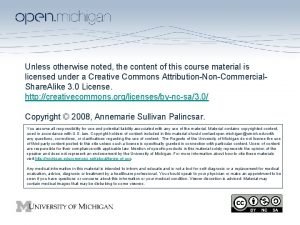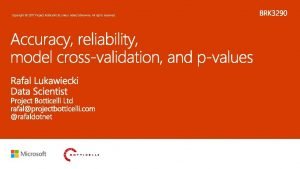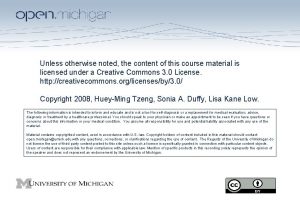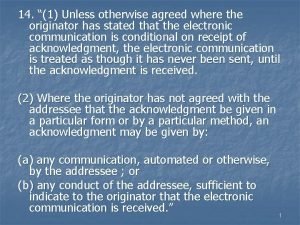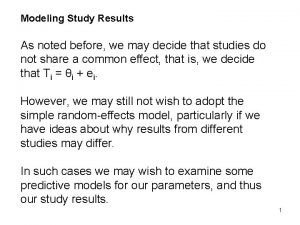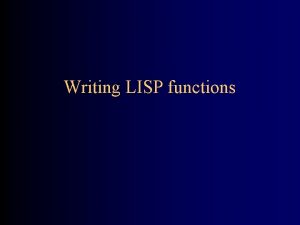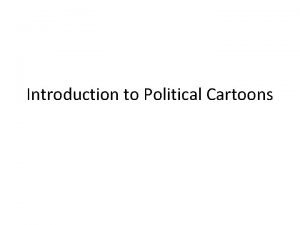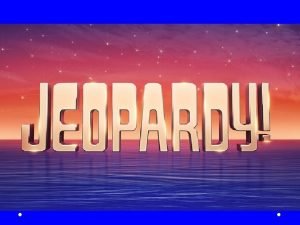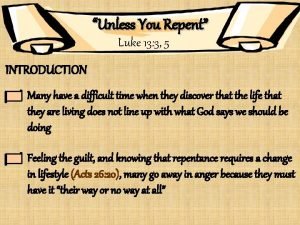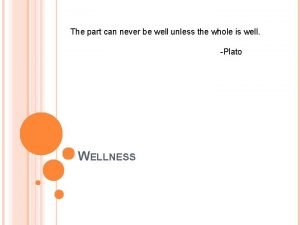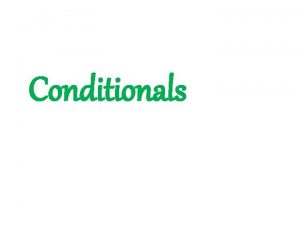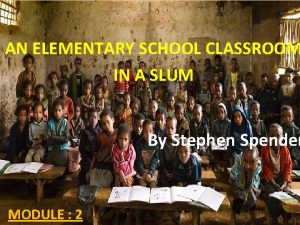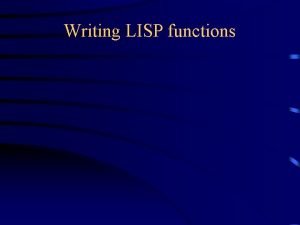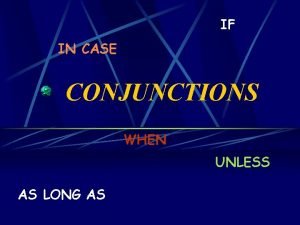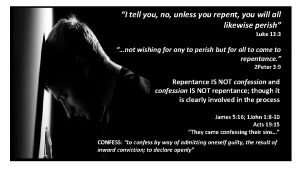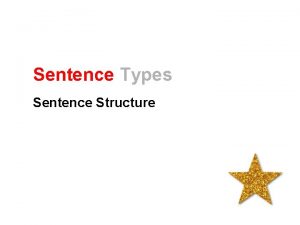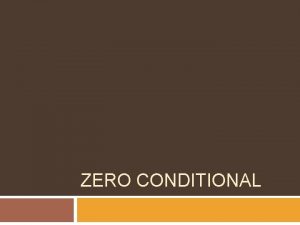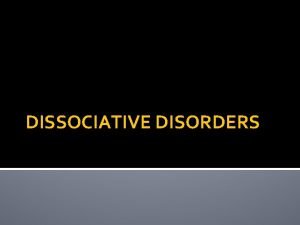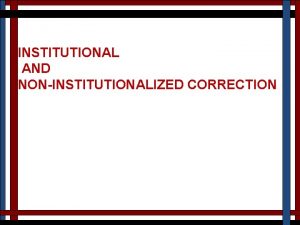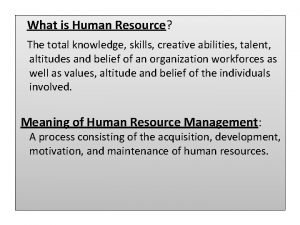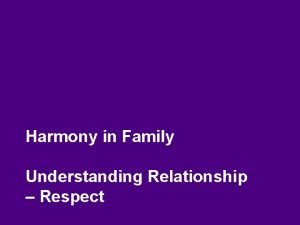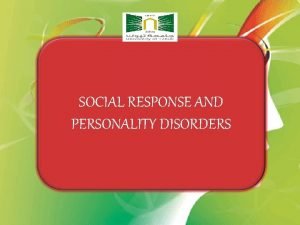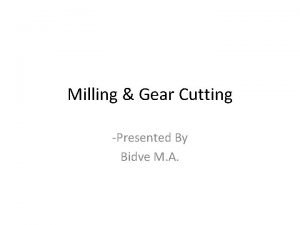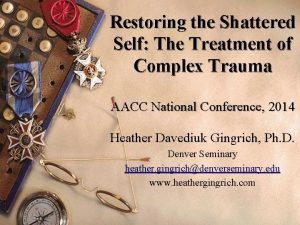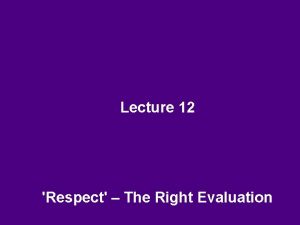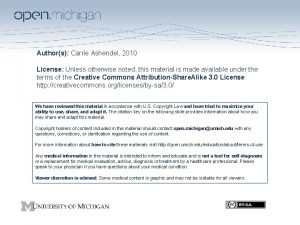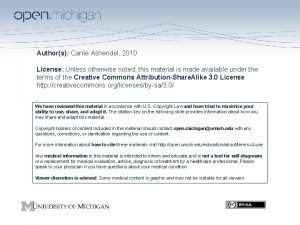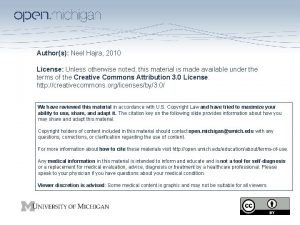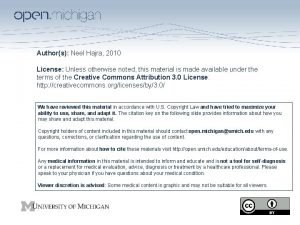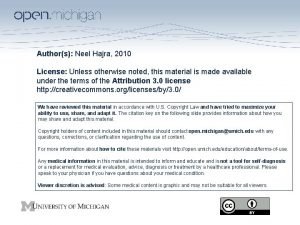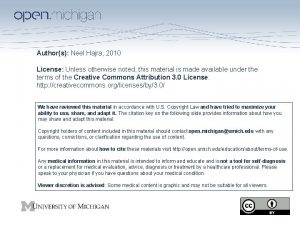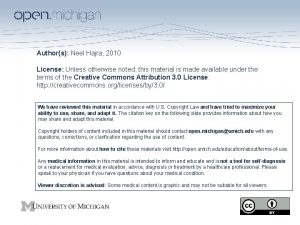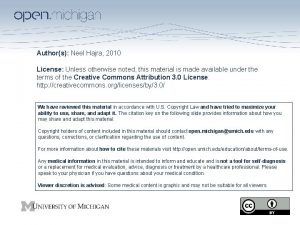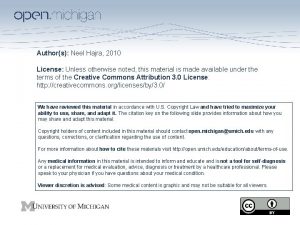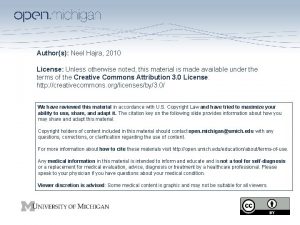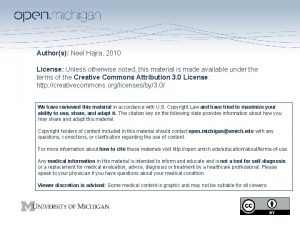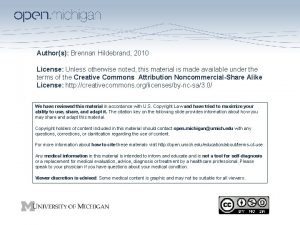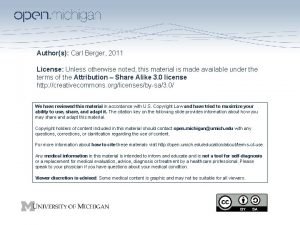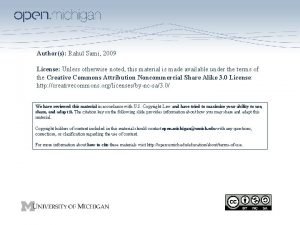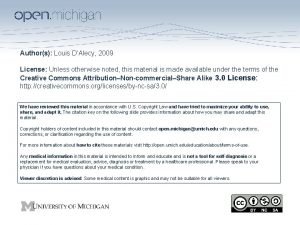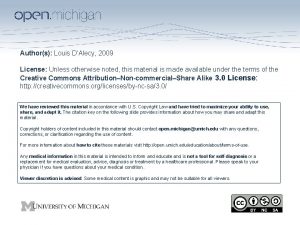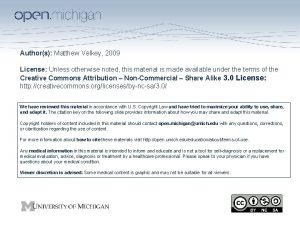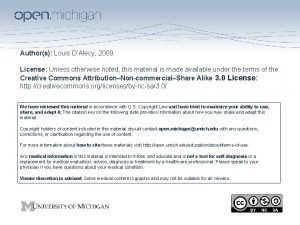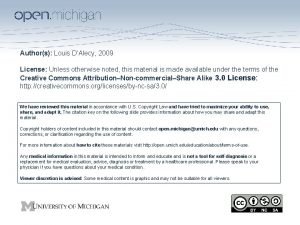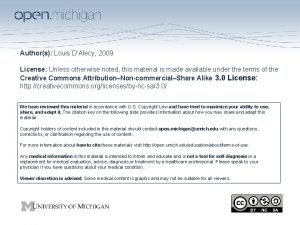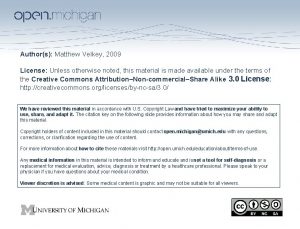Authors Carrie Ashendel 2010 License Unless otherwise noted
































- Slides: 32

Author(s): Carrie Ashendel, 2010 License: Unless otherwise noted, this material is made available under the terms of the Creative Commons Attribution-Share. Alike 3. 0 License: http: //creativecommons. org/licenses/by-sa/3. 0/ We have reviewed this material in accordance with U. S. Copyright Law and have tried to maximize your ability to use, share, and adapt it. The citation key on the following slide provides information about how you may share and adapt this material. Copyright holders of content included in this material should contact open. michigan@umich. edu with any questions, corrections, or clarification regarding the use of content. For more information about how to cite these materials visit http: //open. umich. edu/education/about/terms-of-use. Any medical information in this material is intended to inform and educate and is not a tool for self-diagnosis or a replacement for medical evaluation, advice, diagnosis or treatment by a healthcare professional. Please speak to your physician if you have questions about your medical condition. Viewer discretion is advised: Some medical content is graphic and may not be suitable for all viewers.

Citation Key for more information see: http: //open. umich. edu/wiki/Citation. Policy Use + Share + Adapt { Content the copyright holder, author, or law permits you to use, share and adapt. } Public Domain – Government: Works that are produced by the U. S. Government. (17 USC § 105) Public Domain – Expired: Works that are no longer protected due to an expired copyright term. Public Domain – Self Dedicated: Works that a copyright holder has dedicated to the public domain. Creative Commons – Zero Waiver Creative Commons – Attribution License Creative Commons – Attribution Share Alike License Creative Commons – Attribution Noncommercial Share Alike License GNU – Free Documentation License Make Your Own Assessment { Content Open. Michigan believes can be used, shared, and adapted because it is ineligible for copyright. } Public Domain – Ineligible: Works that are ineligible for copyright protection in the U. S. (17 USC § 102(b)) *laws in your jurisdiction may differ { Content Open. Michigan has used under a Fair Use determination. } Fair Use: Use of works that is determined to be Fair consistent with the U. S. Copyright Act. (17 USC § 107) *laws in your jurisdiction may differ Our determination DOES NOT mean that all uses of this 3 rd-party content are Fair Uses and we DO NOT guarantee that your use of the content is Fair. To use this content you should do your own independent analysis to determine whether or not your use will be Fair.

Policy, Tools, or Exploring Pathways to Culture? Open Processes Carrie Ashendel, 2010

The Burning Question In which contexts and with what methods can policies, tools, or cultural pressures be employed to expose processes and incremental findings behind publicly supported activities?

Outline Ü Why would we want to expose process? Ü Ü Theoretical responses to the “why nots” Concrete examples of the “whys” Ü Which processes might we expose? Ü Case studies of efforts to expose processes Ü Ü Ü Ü Cost & benefits to the public at large as well as individual stakeholders Tools for coordinating transparency and hosting incremental findings Relevant policies and guidelines and acceptance or resentment thereof Social norms and cultural practices related to openness and collaboration Compatibility of funding and accreditation systems External pressures for exposing process and findings Identifying possible authority or sway in pushing towards openness By way of aggregation… Ü Ü Is open always right? Are there policies, tools, or cultural pressures that can be employed across industries? Are there concrete contextual requirements or is there flexibility? Can I create a cross-industry template, check-list, or process for progressing towards open notebook type practices?

Do we really want to see the sausage factory? http: //capperblogspot. com/2009_02_01_archive. html Making Sausage by Erik Boralv

Disclaimer: I’m a planner

What do planners do? Promise grand things to come by Urban. Review. STL http: //www. flickr. com/photos/urbanreviewstl/1709543475/ Watching The Demolition From Inside the www. giacomobutte. com Metropolitan Hotel by Sister 72 Demolish communities And then support huge commercial developments that don’t get used and get slated for demolition a decade later Macy's Parking Lot by iirraa http: //lee 7 accommodation. blogspot. com/2008/07/hougang. html

Stop Eminent Domain Abuse. Long Branch by Shawn Perez And then the public gets angry.

Why do we get to do this? nanjing "nail-house” by Graeme NIcol To resolve the problem of the anti-commons.

Open opportunities to direct and contribute to the use of resources for the public good Participatory Planning

Opening public knowledge resources for greater contribution by exposing processes and early findings Ü What are the public resources that we can open up for greater contribution? Ü How can these resources be made open to external contribution? Ü Who is effected by making these resources available? Ü Why would we want them to be publicly accessible?

Pros and Cons Making Sausage by So Misguided/Monique

Cons Ü Discordance with image/reputation concerns (especially as related to funding and peer confidence) Ü Ü Ü Distortion of efforts to near-term Perfectionistic paralysis could slow down innovation Under-appreciation for process contributions could result in inefficient distribution of authority Ü Fear of getting scooped and losing competitive advantage for funding could create costs related to attempting to maintain secrecy Ü Fear of defacement could create costs related to attempting secrecy Ü Pre-publication could preclude publication or patenting resulting in lost benefit from those systems (or costs of maintaining secrecy and/or juggling publication schedules and copyrights) Ü Difficulties determining validity of non-peer reviewed knowledge products could require funding for new verification/filtration systems or else result in inefficiencies of information overload Ü Storage and bandwidth costs

Anti-Cons Ü Problem: near-term focus or perfectionistic paralysis Ü Ü Response: True short-term inefficiencies during period of cultural adjustments, which can be mitigated by continued emphasis on overall impact and final production Problem: under-valuation of in-process contributions distorting distribution of authority Ü Response: In many industries, highly visible contributions of this type are appreciated, even if not quantifiably so Ü Response: And if they’re not, people are highly unlikely to invest time in them at the expense of promotions, barring catastrophes like uncredited/unfunded mandates Ü Response: Eventually, new crediting tools that balance the true value of end-product and in-process contributions will be created. Problem: Secrecy efforts due to fear of getting scooped and losing competitive advantage Ü Response: Social norms of respecting a creator’s association with ideas or partial work; connect future funding and credit opportunities to reputation based on open process (e. g. , National Human Genome Research Institute Rapid Data Release Policy) Ü Response: More incremental funding opportunities will be created Problem: Secrecy efforts due to fear of defacement Ü Response: Fears of defacement can be effectively outweighed by abundant reaffirmation of quality; cultural shift Ü Response: If you’re that scared that one thing will be taken out of context, then you probably don’t have that much to counter with, i. e. , the lose from to society from secrecy is minimal

Anti-Cons (Con’t) Ü Problem: Inefficiencies to reduce the risk of precluding publication or patenting Ü Response: True short-term inefficiencies of negotiating contracts and reconfiguring paragraphs, but most likely people won’t bother to open process if this isn’t justified Ü Response: Policies of support or mandates or a critical mass of practice Ü Problem: determining validity of in-process findings and data Ü Response: Peer-review publication and renewed grant funding retroactively validate the open-notebook, on whole Ü Response: One only need look at the open notebook if relatively intimately involved with it, in which case they can use their own faculties to assess validity Ü Response: The creation of filters don’t present a huge potential misuse of funds (i. e. , trust in capitalism) Ü Problem: Storage and bandwidth costs Ü Response: Minimal (ar. Xiv. org: >$7/submission, $0. 014/download) Ü Response: Only build what there is demand for (i. e. , trust in capitalism)

Key things to remember from the anticons Ü Mitigate near-term focus and perfectionistic paralysis by careful effort to maintain proper emphasis on end-products and impact (i. e. , don’t just enact policies saying open process is important for funding or credit without saying how important, unless it is a blanket recommendation to adopt an all or nothing practice such as early data release) Ü Carefully measure demand for infrastructure to support open notebook practices before investing in it Ü Don’t mandate open practices when/if the true inefficiencies are prohibitively high in a given industry Ü Preclusion of publication would have multiple downsides and it is circumvented via collective actions, so it is a good focus for deliberate policy or behavioral campaigns

Pros Ü Discovery of otherwise hidden or difficult to access problems and solutions Ü “Sunlight is the best disinfectant” Ü “Stand on the shoulders of giants” (‘See through the eyes of giants? ’) Ü Situate theory and ideas in practice; economic development Ü More timely and potentially more detailed feedback and advice Ü Lack of temporary monopolies promotes rapid innovation and there are exponential speed gains Ü Cultural reinforcement of sincere public interests (belief following behavior – chicken & egg) Select target projects that can benefit accordingly.

Processes being opened Ü Urban redevelopment Ü Personal development Ü Education (online portfolios) Ü Reform efforts Ü Government Ü Nonprofits Ü Corporations Ü Impact Assessment Ü Editing/reviewing Ü creative works Ü research papers Ü grants Ü Data collection and analysis Ü academic (genetics, physics) Ü journalism Ü Competition submissions Ü Open Source Drug Discovery

Social Computing Tools Ü Processes: Wikis, Shared Documents, Mind Mapping, Collaboratorium/Deliberatorium (http: //mixedink. com/main. php) Ü Repositories: Social bookmarking, Shared Feeds (Diigo v 4. 0 beta) Ü Reputation: Blogs/microblogs Where’s the excitement!?

Example Policies, Tools, and Cultures Ü Public, private, and crowdfunding requirements for exposing results Ü Ü Ü Kickstarter, Spot. us Community Resource Projects Project Description Publication Policies for new crediting schemes (kfitz) (Fact: citation index correlated with open data) Ü Ü Netflix Inno. Centive Open Notebook Science Challenge Dryad Recommended practice from professional societies or Mandates from Universities Genomics MIT Open Access Mandate Watchdog groups and third party tools for measuring transparency: Ü Journal publication requirements for exposing data: Ü Ü Ü Competitions/rewards (progress publication, leader boards, and collaboration rooms) Ü Ü Ü Funding, documenting, and crediting each step in Ü the process (Mechanical Turk) Ü Ü NIH Public Access Policy National Human Genome Research Institute Rapid Data Relsease Policy Google Summer of Code Eureka Foundation Ü Glass Pockets, Intelligent Giving Sunlight Foundation, Citizens Union Third party actively exposing another’s process Ü Open. Secrets, Map. Light Tools for publishing/crediting data and process Ü Ü Ü Wiki. Leaks ca. BIG Gen. Bank ar. Xiv. org, SSRN Document. Cloud Kathleen Fitzpatrick – comments 4 tenure

Case Study Questions Ü Are theoretical benefits (pros) actualizable? Ü Does it conquer the cons? Ü Are there tools to coordinate transparency, host findings, facilitate collaboration? Ü Are there relevant mandates/recommendations for transparency? (Is there resentment of existing mandates for transparency? ) Ü Are there industry social norms for transparency? Ü Is there external pressure for transparency? Ü Is there an appropriate accreditation or funding system? Ü Who has authority or sway to enact change?

Case Study: Open Science Are the benefits valuable? Ü Sunlight as a disinfectant: weak Ü Stand on the shoulder of giants: strong Ü Feedback on process: strong Ü Situate theory in practice: strong Ü Rapid innovation from reduced monopolies: very strong Ü Cultural reinforcement of public interest: weak

Case Study: Open Science Does it conquer the cons? Ü Problem: Near-term focus or perfectionistic paralysis Ü Response: Not a problem Ü Under-appreciation of efforts on open notebooks Ü Response: Project Plan publications, Data publications Ü Response: Social norm – all or nothing Ü Response: Not a problem Ü Pre-publication concerns Ü Response: ar. Xiv. org provides critical mass in practice Ü Response: Professional societies encourage it Ü Response: Journals even require co-publication of data Ü Determination of validity Ü Fear of getting scooped or losing Ü Response: retroactive validity via standing publication Ü Response: DIY validation Ü Response: NHGRI decision to let it be, with understanding of respect Ü Storage and bandwidth: Ü Response: Incremental funding Ü Respones: ar. Xiv. org voluntary and publication contributions Ü Fear of defacement

Case Study: Open Science Are there tools to support collaboration and host findings? Ü Proteome. Commons. org Ü Gen. Bank Ü ca. BIG Ü ar. Xiv. org Ü and many other data sharing and pre-printing services that also facilitating discussion and collaborative annotation.

Case Study: Open Science Are there relevant mandates or recommendations for transparency? Ü National Human Genome Research Institute Rapid Data Release Policy � DNA sequences within 24 hours � DNA traces within 7 days � Whole genome sequences within 7 days � Whole gnome assemblies as soon as possible (meeting quality assurance standards)

Case Study: Open Science Is there external pressure for transparency? Ü Tax dollars used, so, yes, but mostly just focused on Open Access, not Open Process. Ü But there is pressure to not patent naturally occurring DNA sequences (Myriad Gene Patent Case)

Case Study: Open Science Are there appropriate crediting and funding schemes? Ü This is lagging. Ü Creation of “data papers” Ü Idea of “Project Plan” publications (hasn’t caught on) Ü There are new funding mechanisms: Eureka and Common Resource Projects

Incremental funding data production data publication $$ data analysis publication International Human Genome Sequencing Consortium Mouse Genome Sequencing Consortium Mammalian Gene Collection SNPs Consortium International Hap. Map Project

Case Study: Open Science Who has the authority or sway to push for open process? Ü Professional societies/funders (and possibly crowdsourced funders) Ü Journal publishers by requiring data publication and by creating new publication types Ü Scientists by creating tools Ü Scientists by hosting competitions, thereby promoting the public benefit of open science Ü Third parties by creating new credit systems or adjusting the Citation Index

Contextual Comparisons Bio. Sciences Chemistry Philanthropy 2. 0 Actualizable Pros strong weak strong Mitigated Cons strong weak Tools strong weak Mandates/Recs strong weak neutral Social Norms strong weak External Pressure neutral strong weak Credit Scheme In search of: timelines/natural order, imperatives, best bets.

For further discussion Ü Is open always right? Ü Are there policies, tools, or cultural pressures that can be employed across industries? Ü Are there concrete contextual requirements or is there flexibility? Ü Can I create a cross-industry template, check-list, or process for creating open notebook type practices?
 Unless otherwise noted meaning
Unless otherwise noted meaning Unless noted otherwise
Unless noted otherwise Huey-ming tzeng
Huey-ming tzeng Unless otherwise agreed
Unless otherwise agreed Noted
Noted Nigel barker portfolio
Nigel barker portfolio Noted
Noted Lisp unless
Lisp unless One sees his finish unless good government retakes the ship
One sees his finish unless good government retakes the ship Juliet threatens to kill herself unless the friar
Juliet threatens to kill herself unless the friar If you did your homework last night
If you did your homework last night Luke 13:3-5
Luke 13:3-5 The part can never be well
The part can never be well Sintaxis de oraciones subordinadas sustantivas
Sintaxis de oraciones subordinadas sustantivas An elementary school classroom poetic devices
An elementary school classroom poetic devices A unless b
A unless b Cond in lisp
Cond in lisp In case unless
In case unless Unless you repent you will all likewise perish
Unless you repent you will all likewise perish Unless what
Unless what The weather has been nice but it may snow again any day
The weather has been nice but it may snow again any day Sandy feels dirty unless she bathes and changes
Sandy feels dirty unless she bathes and changes Unless
Unless Dissociative
Dissociative Board of pardon and parole philippines organizational chart
Board of pardon and parole philippines organizational chart Hermansons model
Hermansons model The implementation of ra 10912 started on
The implementation of ra 10912 started on Over/under/otherwise evaluation is
Over/under/otherwise evaluation is Dissociative disorder not otherwise specified
Dissociative disorder not otherwise specified Dissociative disorder not otherwise specified
Dissociative disorder not otherwise specified In compound indexing index crank movement 40/n
In compound indexing index crank movement 40/n Restoring the shattered self
Restoring the shattered self Otherwise evaluation examples
Otherwise evaluation examples
